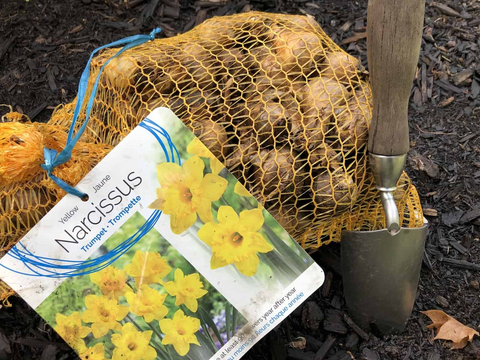As the days grow shorter and the air turns crisp, it's time to turn your attention to preparing your fall garden for the challenges of winter. With the right care and attention, you can protect your plants and set the stage for a thriving garden when spring returns. In this blog, we'll explore the essential tasks and tips for ensuring your garden makes a successful transition into the winter months.The following content also has some reference value for raised garden beds.

1. Clean Up Your Garden
The first step in preparing your fall garden for winter is a thorough clean-up. Remove any dead or diseased plants, spent annuals, and garden debris. This not only keeps your garden looking tidy but also helps prevent the overwintering of diseases and pests.
2. Compost Leaves and Debris
Instead of disposing of fallen leaves and garden debris, consider turning them into valuable compost. Shredded leaves, in particular, make an excellent addition to your compost pile, providing essential organic matter and nutrients for your garden.
3. Plant Fall Bulbs
Fall presents an ideal opportunity for the planting of spring-blooming bulbs such as tulips, daffodils, and crocuses. Follow planting depth and spacing recommendations for each type of bulb to ensure a stunning display when spring arrives.
4. Divide and Transplant Perennials
Fall is the ideal season for dividing and transplanting perennials. This not only rejuvenates mature plants but also allows you to expand your garden or share your favorite varieties with fellow gardeners.
5. Prune Trees and Shrubs
Pruning in the fall is crucial for maintaining the health and structure of your trees and shrubs. Remove dead or diseased branches and trim for shape and size as needed. Be cautious not to over-prune, as this can leave plants vulnerable to winter damage.

6. Apply Mulch
Mulching your garden beds before winter sets in provides several benefits. It helps insulate the soil, conserves moisture, suppresses weeds, and protects plant roots from freezing temperatures. Use natural mulching materials such as straw, finely shredded leaves, or wood chips.
7. Protect Sensitive Plants
Some plants, especially those that are less cold-hardy, may require extra protection. Consider using burlap, frost cloth, or plant covers to shield vulnerable plants from frost and wind.
8. Clean and Store Garden Tools
After a season of hard work, it's essential to clean and properly store your garden tools. Clean off dirt and rust, sharpen the blades, and apply a thin layer of oil to avoid corrosion.
9. Winterize Your Lawn
Prepare your lawn for winter by continuing to mow it until the grass stops growing. Consider applying a winterizing fertilizer to strengthen the grass's root system during the cold months.
10. Check and Maintain Your Irrigation System
If you have an irrigation system, it's crucial to drain water from hoses, pipes, and sprinklers to prevent freezing and potential damage. Consider having your system professionally winterized.
11. Prepare Garden Beds for Proper Drainage
Ensure that your garden beds have adequate drainage. Proper drainage prevents water from collecting and freezing, which can harm plant roots. Improve drainage if needed by amending the soil or adjusting the bed's slope.
12. Bring Houseplants Indoors
Before temperatures drop too low, bring your houseplants indoors. Inspect them for pests, rinse them off, and place them in a suitable indoor location with the right light and humidity levels.
13. Store Seeds Carefully
It is best to keep leftover seeds in a dry, cool place. Proper storage can help maintain their viability for the next growing season.
14. Plan for Spring
While you're focused on fall tasks, it's never too early to start planning for your spring garden. Research and order seeds, design your garden layout, and consider any improvements you'd like to make.

Conclusion
By taking the time to complete these essential fall tasks, you'll protect your garden from the harsh winter elements and set the stage for a vibrant and healthy garden in the spring. A well-maintained garden in the fall is a gift to your future gardening self, as it reduces the workload when warmer weather returns. Embrace the beauty of autumn and provide the care your garden needs to thrive throughout the changing seasons.









